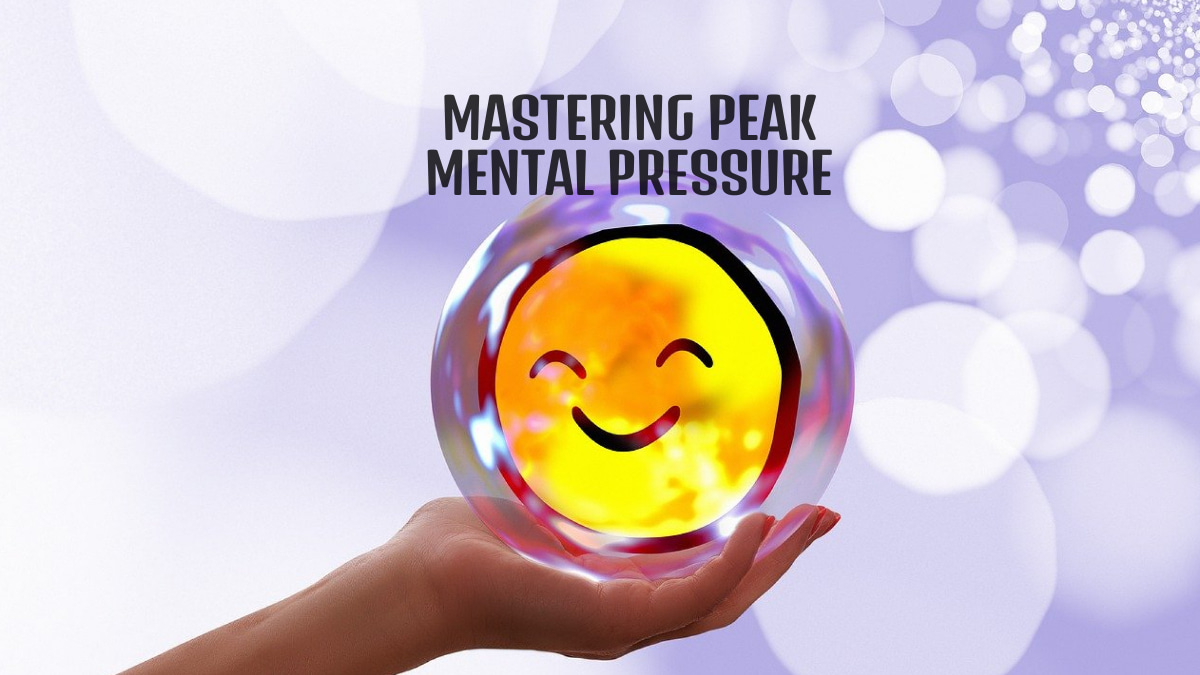Table of Contents
In our fast-paced world, peak mental pressure is almost inevitable. Whether it’s due to work deadlines, personal responsibilities, or unexpected challenges, we all experience moments where stress reaches its peak. However, the ability to normalize this pressure quickly is crucial for maintaining mental well-being and overall productivity. In this blog, we’ll delve into effective strategies to manage and normalize peak mental pressure swiftly.
“Life is 10% what happens to us and 90% how we react to it.” – Charles R. Swindoll
Understanding Peak Mental Pressure
Before diving into strategies for normalization, it’s essential to understand what peak mental pressure entails. Peak mental pressure refers to the heightened state of stress or anxiety that occurs during demanding situations. This pressure can manifest in various ways, including increased heart rate, racing thoughts, difficulty concentrating, and feelings of overwhelm.
Peak mental pressure usually happens because of things going on around us or inside us. Imagine having lots of work to finish really quickly, or trying to do something really hard, or when something unexpected happens that throws us off track. These are external things that can make our stress levels go up. But it’s not just what’s happening outside that can make us feel this way. Sometimes, it’s our own thoughts and feelings that add to the pressure. For example, if we always want things to be perfect, or if we doubt ourselves a lot, or if we expect too much from ourselves, these internal factors can make the stress even worse. So, it’s like a combination of things from the outside and inside that make us feel really stressed out.
Recognizing the Signs
The first step in normalizing peak mental pressure is recognizing the signs and symptoms. Awareness of these indicators allows for early intervention and effective management. Some common signs of peak mental pressure include:
- Physical symptoms: Headaches, muscle tension, fatigue, rapid heartbeat.
- Cognitive symptoms: Racing thoughts, difficulty concentrating, memory lapses.
- Emotional symptoms: Irritability, mood swings, feelings of overwhelm.
- Behavioural symptoms: Procrastination, avoidance, changes in appetite or sleep patterns.
By being attuned to these signs, individuals can take proactive steps to address and alleviate peak mental pressure before it escalates further.
Strategies for Quick Normalization

1. Deep Breathing and Mindfulness:
Deep breathing exercises involve taking slow, deep breaths, focusing on the sensation of the breath entering and leaving the body. Mindfulness techniques encourage individuals to be fully present in the moment, observing thoughts and sensations without judgment. By practising deep breathing and mindfulness, individuals can activate the body’s relaxation response, which counteracts the physiological effects of stress. This includes lowering heart rate, reducing muscle tension, and calming the mind. Incorporating these practices into daily routines, such as during moments of heightened stress or as part of a regular meditation practice, can build resilience to mental pressure over time.
2. Physical Activity:
Physical activity is a powerful antidote to mental pressure. Exercise releases endorphins, neurotransmitters that act as natural painkillers and mood elevators, promoting a sense of well-being and reducing stress. Whether it’s a brisk walk, yoga session, or quick workout, engaging in physical activity can help individuals release built-up tension and energy. Exercise also provides a distraction from negative thoughts, allowing individuals to focus on the present moment and experience a sense of accomplishment. Regular exercise has long-term benefits for mental health, including improved mood, reduced anxiety, and enhanced resilience to stress.
3. Prioritize and Delegate Tasks:
When faced with multiple responsibilities, it’s easy to feel overwhelmed and unsure where to start. Prioritizing tasks based on urgency and importance helps individuals regain a sense of control and focus their energy on the most pressing issues. Breaking tasks down into manageable steps makes them feel more achievable, reducing feelings of overwhelm. Delegating tasks to others when possible allows individuals to lighten their workload and free up time for activities that promote relaxation and well-being. Effective time management techniques, such as using to-do lists or setting deadlines, can also help individuals stay organized and focused on their priorities.
4. Practice Self-Compassion:
During moments of peak mental pressure, individuals often engage in self-criticism and negative self-talk, which only exacerbate feelings of stress and inadequacy. Practicing self-compassion involves treating oneself with kindness and understanding, recognizing that imperfection is a part of being human. This includes acknowledging one’s struggles without judgment, offering oneself words of encouragement, and practising forgiveness for perceived shortcomings. Cultivating self-compassion fosters resilience and self-esteem, enabling individuals to navigate challenges with greater ease and acceptance.
5. Seek Social Support:
Connecting with others during times of heightened stress provides valuable emotional support and perspective. Whether it’s friends, family, or colleagues, sharing concerns and seeking advice or encouragement can offer validation and reassurance. Simply talking about one’s feelings can provide a sense of relief and reduce feelings of isolation. Additionally, social support networks provide opportunities for distraction and enjoyment, helping individuals maintain a balanced perspective amidst challenges.
6. Limit Exposure to Stressors:
In situations where external stressors are contributing to peak mental pressure, it’s important to take proactive steps to limit exposure to these triggers. This may involve setting boundaries, such as turning off notifications or setting aside designated times for work or communication. Saying no to additional commitments that contribute to stress allows individuals to prioritize their well-being and focus on activities that bring them joy and fulfilment. Temporary disengagement from stressful environments, such as taking breaks or spending time in nature, can also provide much-needed respite and perspective.
7. Engage in Relaxation Techniques:
Incorporating relaxation techniques into daily routines can help individuals manage and reduce mental pressure. Progressive muscle relaxation involves tensing and then relaxing different muscle groups, promoting physical and mental relaxation. Guided imagery uses visualization exercises to create a sense of calm and well-being. Aromatherapy, through the use of essential oils, can stimulate the senses and induce feelings of relaxation and stress relief. Experimenting with different relaxation techniques allows individuals to find what works best for them and incorporate these practices into their daily self-care routine.
8. Focus on Solutions:
Instead of dwelling on problems or setbacks, shift focus towards finding solutions and taking actionable steps towards resolution. Adopting a problem-solving mindset empowers individuals to regain a sense of agency and control over their circumstances. Breaking down problems into smaller, more manageable steps allows individuals to tackle them systematically and make progress towards their goals. By focusing on solutions rather than dwelling on obstacles, individuals can maintain a sense of optimism and resilience in the face of adversity.
9. Set Realistic Expectations:
Unrealistic expectations often contribute to heightened mental pressure. Setting realistic goals and expectations for oneself allows for a more balanced approach to productivity and reduces the likelihood of experiencing undue stress. This involves acknowledging one’s limitations, prioritizing self-care, and recognizing that perfection is not attainable. By setting achievable goals and celebrating progress, individuals can maintain motivation and confidence in their abilities.
10. Practice Gratitude:
Cultivating a mindset of gratitude can help shift perspective and reduce the impact of peak mental pressure. Taking time each day to reflect on what one is grateful for fosters positivity and resilience in the face of challenges. This can be done through journaling, meditation, or simply expressing appreciation for the people and experiences in one’s life. By focusing on the positives, individuals can counteract negative thinking patterns and cultivate a sense of abundance and contentment.
Conclusion
Peak mental pressure is an inevitable aspect of life, but it doesn’t have to derail our well-being or productivity. By recognizing the signs, employing effective strategies, and cultivating resilience, individuals can normalize mental pressure quickly and navigate challenging situations with greater ease. Remember, it’s not about eliminating stress entirely but rather building the resilience to thrive in spite of it. With practice and perseverance, mastering peak mental pressure becomes not only achievable but empowering.















